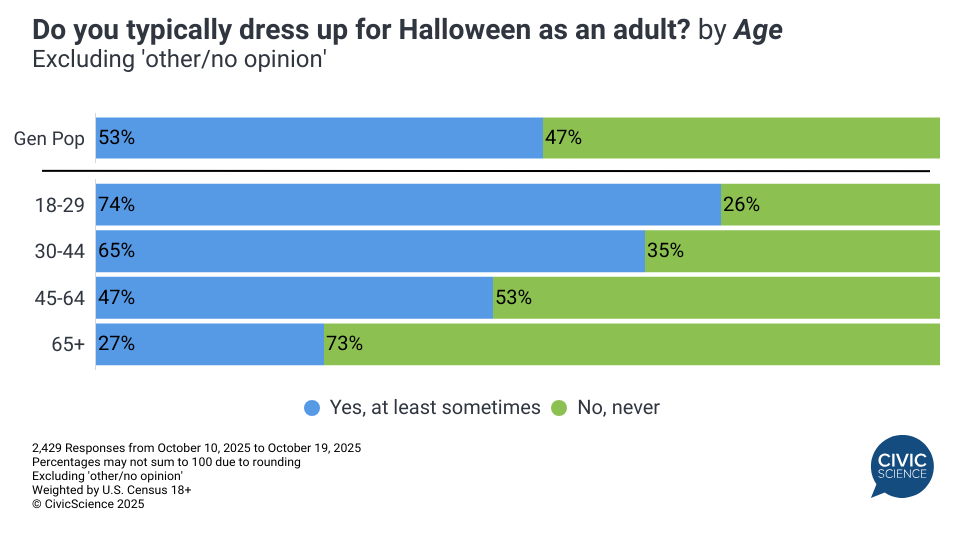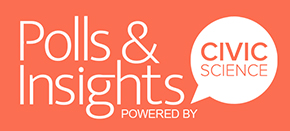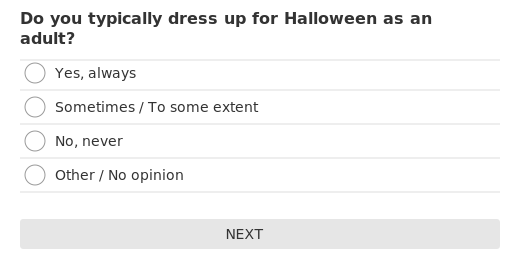Just over half of American adults (53%) still wear Halloween costumes at least sometimes, including 15% who always do, while 47% never participate (excluding those with no opinion). This divide reveals clear demographic patterns and unexpected personality insights about who embraces Halloween’s playful side.
Age creates the sharpest division: 73% of adults 18-29 costume up, dropping to 65% for ages 30-44, 47% for 45-64, and just 27% of seniors. Women outpace men in costume participation (57% vs 48%). The generational cliff suggests Halloween costume-wearing has a cultural expiration date that most people hit by middle age. Women are notably more likely to costume up than men (57% vs 48%), suggesting either greater enthusiasm for the holiday or different social expectations around participation.

Personality differences emerge clearly. For instance, those who dress up lean toward Reese’s (23% vs 33% of non-costumers) and Kit Kat (13% vs 8%), as their favorite halloween candy, while non-participants heavily favor Reese’s as their top choice. Milky Way shows the opposite pattern, preferred more by non-costumers (15% vs 11%). These preferences might reflect different relationships with nostalgia—costume-wearers choosing candies associated with active trick-or-treating memories.
What truly distinguishes costume-wearers is their relationship with Halloween activities. Among those who dress up, only 16% say costumes themselves are their favorite part of Halloween, while 23% prefer trick-or-treating and 17% love visiting haunted houses. Non-costumers overwhelmingly cite eating candy as their favorite aspect (30%), suggesting fundamentally different engagement levels—participants versus consumers of the holiday.
The personality data adds depth: costume-wearers show more spontaneous tendencies (33% vs 25% of non-costumers), though both groups lean toward planning overall. This suggests that while costume-wearers aren’t necessarily impulsive people, they’re more willing to embrace moments of scheduled spontaneity—planning to be playful, as it were.
These patterns paint adult costume-wearers as active holiday participants who view Halloween as an experience to create rather than simply observe. They’re younger, more likely female, slightly more spontaneous, and engaged with multiple aspects of the celebration beyond just candy consumption. Non-costumers emerge as practical observers who’ve aged out of active participation but still enjoy the holiday’s sweeter benefits. In the great Halloween divide, we’re not just choosing whether to wear costumes—we’re revealing whether we see holidays as something to watch or something to join.
Love taking polls? Sign up to participate in the Poll of the Day here.
This article’s data comes solely from CivicScience’s database, which contains nearly 700,000 poll questions and 5 billion consumer insights.


